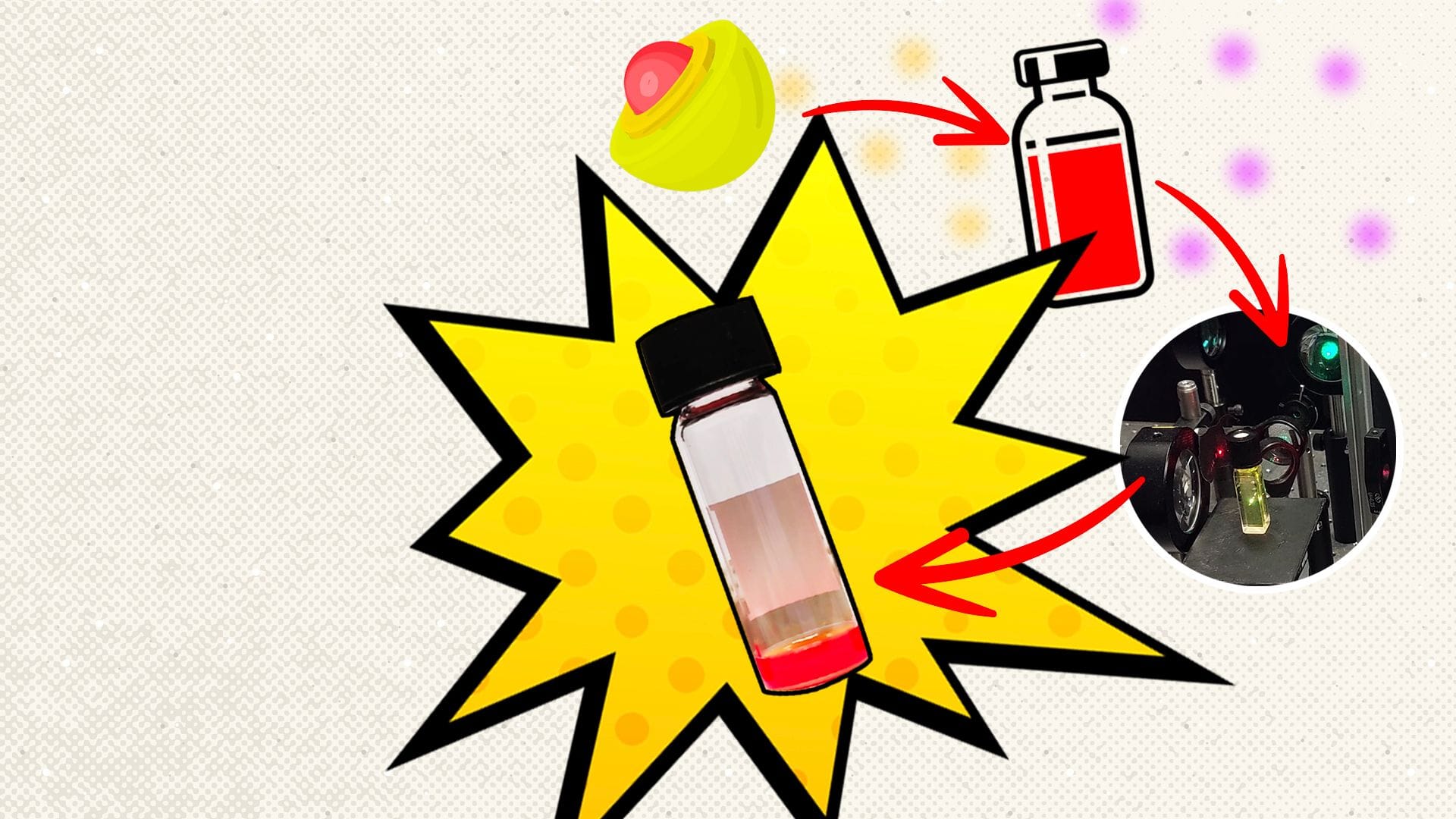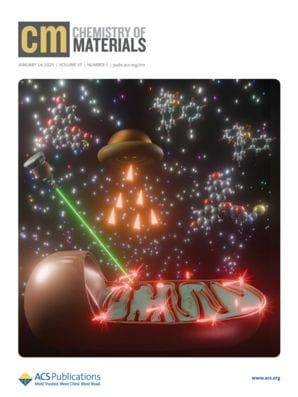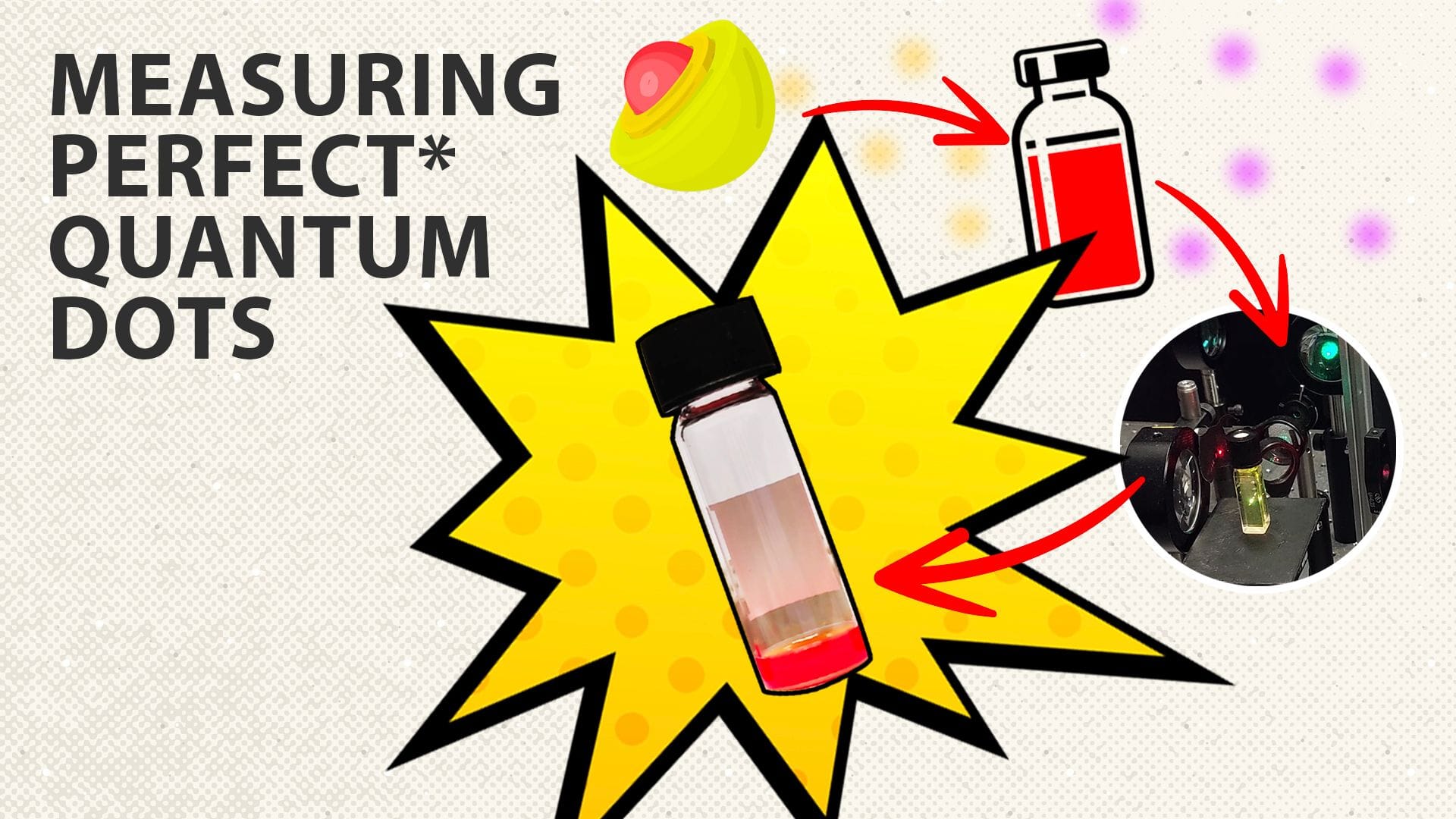A new study reveals a method that could one day serve as a gold standard for certifying quantum dot efficiency, ensuring that the highest-performing quantum dots can meet the demands of next-generation technologies.

Quantum dots have come a long way in a rather short amount of time. From their creation in the early 1980s to the Nobel Prize in Chemistry in 2023, they've illuminated and colored our lives in ways we never could have imagined—and scientists have nearly perfected their efficiency. But what exactly does "perfect" mean in the world of quantum dots, and how do we maintain this level of efficiency to ensure the highest-performing quantum dots meet the needs of next-gen tech?
Colloidal quantum dots are solution-based nanocrystals prized for their unique light-harvesting abilities. They can illuminate, create color, harness solar energy, and function as semiconductors. These well-studied systems have become so efficient, the photoluminescence quantum yield (PLQY) can approach unity, meaning for every photon absorbed by the solution, one photon is re-emitted in an almost perfect ratio of 1-to-1. But for these state-of-the-art quantum dots to be utilized outside the laboratory in the next generation of LEDs, screens and semiconductors, we need reliable, accurate and precise methods for certifying claims of unity.
When a photon hits a quantum dot, that photon is either re-emitted as light or it dissipates as heat. Typically, PLQY is captured by quantifying light, but this kind of data can be convoluted and the methods for acquiring it can be difficult to reproduce.
To address this challenge, a team of scientists in Belgium sought to simplify both the data collection and analysis by measuring heat instead. This work, published in Chemistry of Materials, allows scientists to verify the efficiency of their quantum dot solutions after synthesis and could help streamline the use of colloidal quantum dots in new technologies.

Accurate, Precise, and Verifiable Photoluminescence Efficiency of Colloidal Quantum Dots Sols by Photothermal Threshold Quantum Yield Analysis
DOI: 10.1021/acs.chemmater.4c02490
Watch the Headline Science short illustrating this new technique:
The content above is brought to you by the ACS Science Communications team. To watch more exciting videos and shorts covering some of the latest research in ACS journals, visit the Headline Science page on YouTube.
Video credits:
Written and narrated by Vangie Koonce
Edited by Darren Weaver
Produced by Vangie Koonce and Andrew Sobey
Executive produced by Matthew Radcliff
Quantum Dots: Explore related articles from ACS Journals
Blog Posts
The 2023 Nobel Prize in Chemistry Goes to Moungi G. Bawendi, Louis E. Brus, and Alexei I. Ekimov
The 2023 Nobel Prize in Chemistry was awarded to Moungi G. Bawendi, Louis E. Brus, and Alexei I. Ekimov “for the discovery and synthesis of quantum dots." Browse noteworthy articles published by the winners in ACS Journals.
Research Articles
Quantum Dot Reporters Designed for CRISPR-Based Detection of Viral Nucleic Acids
Ziwen Tang, Menglu Gao, Feng Gong, Xiaoyun Shan, Yeling Yang, Yaran Zhang, Liangjun Chen, Fubing Wang*, Xinghu Ji*, Fuxiang Zhou, and Zhike He*
DOI: 10.1021/acs.analchem.4c03541
Hybrid Amyloid Quantum Dot Nano-Bio Assemblies to Probe Neuroinflammatory Damage
Wesley Chiang, Jennifer M. Urban, Francine Yanchik-Slade, Angela Stout, Jennetta M. Hammond, Bradley L. Nilsson*, Harris A. Gelbard*, and Todd D. Krauss*
DOI: 10.1021/acschemneuro.4c00183
Multihierarchical Regulation To Achieve Quantum Dot Nanospheres with a Photoluminescence Quantum Yield Close to 100%
Leping Lin, An-An Liu, Wei Zhao, Yin Yang, Dong-Liang Zhu, Bo-Ran Dong, Fei Ding, Di Ning, Xiaobo Zhu, Dingbin Liu, and Dai-Wen Pang*
DOI: 10.1021/jacs.4c03308
CdSe/ZnS Quantum Dot Patterned Arrays for Full-Color Light-Emitting Diodes in Active-Matrix QLED Display
Xiaoxun Li, Shuo Sun, Yi Zhang, Xiaoying Gu, Congcong Liang, Takuo Tanaka, and Jin Li*
DOI: 10.1021/acsanm.4c00581
Quantum-Dot Light-Emitting Fiber Toward All-In-One Clothing-Type Health Monitoring
Ho Seung Lee, Seong Uk Kong, Seonil Kwon, Ha-Eun Cho, Byeongju Noh, Yong Ha Hwang, Seungyeop Choi, Dohong Kim, Jun Hee Han, Tae-Woo Lee, Yongmin Jeon*, and Kyung Cheol Choi*
DOI: 10.1021/acsnano.4c04374
Quantum Dot-Sensitized Triplet–Triplet Annihilation Photon Upconversion for Solar Energy Conversion and beyond
Zhiyuan Huang*, Chen-Ho Tung, and Li-Zhu Wu*
DOI: 10.1021/accountsmr.3c00186
Fast Organic Cation Exchange in Colloidal Perovskite Quantum Dots toward Functional Optoelectronic Applications
Chenyu Zhao, Claudio Cazorla, Xuliang Zhang, Hehe Huang, Xinyu Zhao, Du Li, Junwei Shi, Qian Zhao, Wanli Ma, and Jianyu Yuan*
DOI: 10.1021/jacs.3c14000
Review Articles
Advances in Quantum Dot Applications for the Oil and Gas Industry: Current Trends and Future Directions
Oscar E. Medina*, Stephania Rosales, Nathaly Garzón, Daniel López, Esteban A. Taborda, Juan C. Ordóñez, Sergio Augusto Fernández, Farid B. Cortés*, and Camilo A. Franco*
DOI: 10.1021/acs.energyfuels.4c03984
Nanocrystal Quantum Dots: From Discovery to Modern Development
Alexander L. Efros* and Louis E. Brus*
DOI: 10.1021/acsnano.1c01399
Scientific Insights into the Quantum Dots (QDs)-Based Electrochemical Sensors for State-of-the-Art Applications
Khezina Rafiq*, Iqra Sadia, Muhammad Zeeshan Abid, Muhammad Zaryab Waleed, Abdul Rauf, and Ejaz Hussain*
DOI: 10.1021/acsbiomaterials.4c01256
Colloidal Quantum Dots for Explosive Detection: Trends and Perspectives
Andrea De Iacovo, Federica Mitri, Serena De Santis, Carlo Giansante, and Lorenzo Colace*
DOI: 10.1021/acssensors.3c02097
Colloidal Quantum Dots as Platforms for Quantum Information Science
Cherie R. Kagan*, Lee C. Bassett*, Christopher B. Murray*, and Sarah M. Thompson
DOI: 10.1021/acs.chemrev.0c00831

